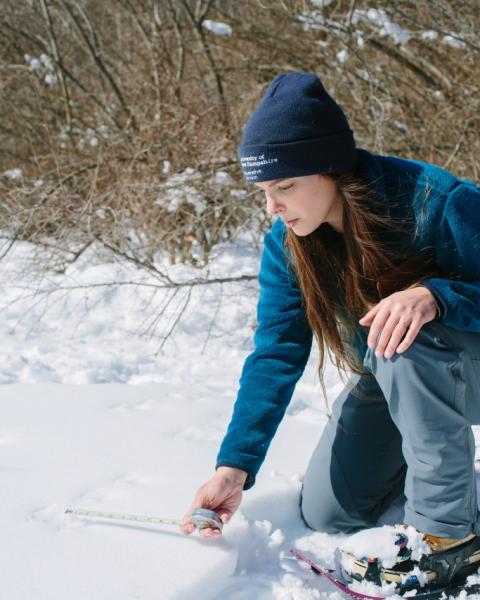In wildlife conservation, connections matter.
New Hampshire is home to a rich diversity of wildlife including birds, mammals, reptiles, amphibians, beetles, bugs, and other insects. These wildlife species rely on habitats, such as forests and wetlands, to meet their basic needs, but they don’t just stay in one place. Wildlife need to move. Different species move various distances to find food and shelter, reproduce, migrate between winter and summer habitats, and disperse to new territories.
A wildlife corridor is a habitat linkage that joins two or more areas of habitat, allowing for the movement of wildlife from one area to another. These corridors can be an area of forest, in and along rivers and streams (riparian corridors), along ridgelines, or even along a hedgerow.
Wildlife corridors are critically important to protect wildlife. Conserving and creating a network of connected habitats allows for gene flow (mating opportunities) between populations and enables a wide diversity of wildlife to move across the landscape. This is especially important now in light of habitat loss and our changing climate. Protecting wildlife habitat and connectivity also helps to ensure clean water, clean air, healthy soils, and more.
Connections in a Changing Landscape
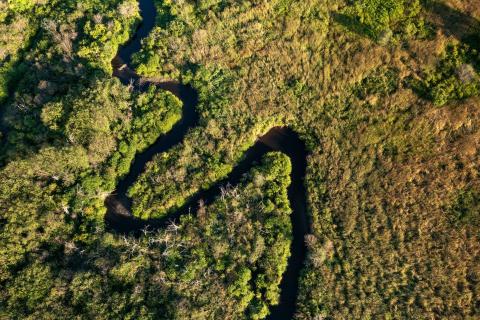
As human activity spreads across the landscape, roads, houses and other development can result in the loss of wildlife habitat and the remaining habitat becomes fragmented into smaller and smaller blocks. Providing linkages between habitats allows wildlife to move safely from one area to another, which reduces the risk of population extinction, helps to maintain genetic diversity, and will ensure species are better able to adapt to our changing climate.
As our landscape changes, maintaining and restoring connected habitats is critical for wildlife. The loss of wildlife corridors can result in direct mortality, barriers to movement (dispersal), and habitat fragmentation for many species. The risks are especially high for slow moving species (e.g. reptiles and amphibians), species that depend on high adult survivorship (e.g. turtles), species that are long range dispersers (e.g. bobcats or American martens), and species that already have limited populations (e.g. timber rattlesnakes).
Aquatic Connectivity Matters, Too!
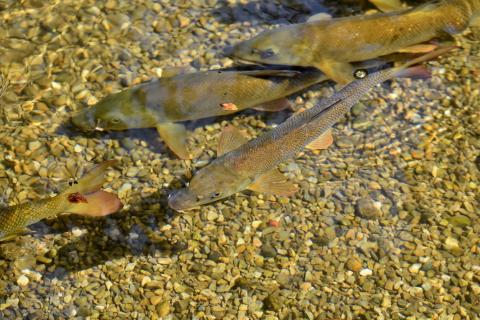
It’s not just wildlife on land that require wildlife corridors. Connectivity between freshwater and estuarine habitats is important for the movement and survival of many aquatic species. For example, dams and undersized culverts can act as barriers to movement for turtles, fish, and other aquatic organisms.
Wildlife need corridors - Here are three of the many New Hampshire species that require corridors.

Blanding's Turtle
Blanding’s turtles are a state-endangered species found in southern New Hampshire. They use a diversity of wetland, aquatic, and upland habitats and will often travel a mile or more among them especially during breeding or nesting. These travels can bring them into contact with roads and vehicles, pets, and other human-made barriers. They can live to be more than 70 years old, don’t begin to reproduce until they are 14-20 years old, and lay relatively few eggs each year, which means that adult deaths can have a significant impact on populations. To remain on the landscape, Blanding’s turtles require large blocks of connected wetland and upland habitat with limited development inbetween.

American Marten
American marten, a species of greatest conservation need in northern New Hampshire, use older-aged coniferous and mixed-wood forests that have complex structure such as large cavity trees for denning, and downed, dead wood providing habitat for a variety of prey (mice, voles, shrews, red squirrels). Since they avoid non-forested areas, they require large blocks of forested habitat and movement corridors in order to disperse long distances and provide for gene flow amongst populations.
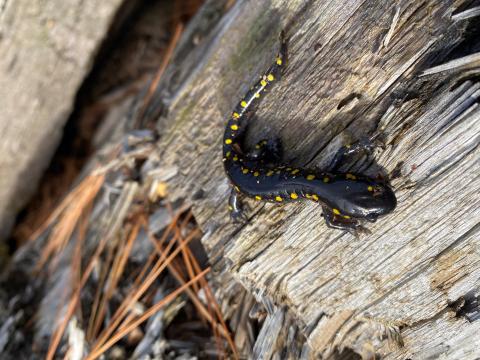
Spotted Salamander
Spotted salamanders are relatively common throughout New Hampshire, but are rarely seen. Adults spend the majority of their life underground or under logs in the forest, emerging each year on the first handful of warm, rainy spring nights to make their way to breed in vernal pools (seasonal wetlands). Spotted salamanders and other migrating amphibians can suffer high mortality rates from vehicles as they attempt to cross roadways that are between their woodland homes and breeding ponds. Since this road mortality can have a significant impact on amphibian populations, spotted salamanders benefit from corridors that connect these two habitats.
How You Can Help
Know your corridors & wildlife. Identify large habitat areas and important wildlife corridors in your community. Determine whether these areas are on conserved lands or not, and where and how they intersect roadways. Document areas used by wildlife and share relevant observations to NH Wildlife Sightings (nhwildlifesightings.unh.edu).
Plan for corridors. Incorporate wildlife corridors into town documents such as natural resource inventories, conservation plans, and master plan chapters.

Promote solutions for roads. Make roads safer for both wildlife and people by promoting solutions that allow wildlife to safely cross roads. For example, appropriately sized culverts may provide safe passage for wildlife under a road, or seasonal signs can alert drivers to slow down for wildlife.
Conserve and restore. Develop and implement land conservation and habitat restoration plans that maintain corridors or reconnect wildlife habitats. Restore or create riparian corridors by planting trees and shrubs along streams.
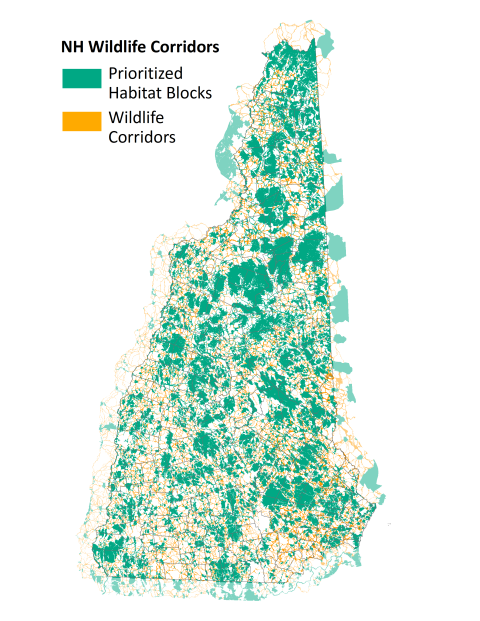
The NH Wildlife Corridors Map, developed by NH Fish & Game Department, is a useful tool to help identify these important areas on the landscape. The map shows corridors that connect core areas of wildlife habitat and can be used by conservation planners, landowners, land trusts, biologists, and anyone who cares about wildlife.
Additional Information
INFO ON WILDLIFE CORRIDORS IN NEW HAMPSHIRE
wildlife.state.nh.us/nongame/corridors.html
NH WILDLIFE CORRIDORS MAP
nhfg.maps.arcgis.com
Download at NH GRANIT
granit.unh.edu | granitview.unh.edu
Taking Action For Wildlife
We bring information about NH’s wildlife to you! The Taking Action for Wildlife Team, made up of staff from NH Fish and Game, UNH Cooperative Extension, and the NH Association of Conservation Commissions, works to help towns, land trusts, natural resource professionals, and private landowners conserve wildlife and habitats in New Hampshire. We help put information from NH’s Wildlife Action Plan in the hands of New Hampshire citizens.
For more information about habitat management, resources and publications about other wildlife, and to learn more about the New Hampshire Wildlife Action Plan visit:
Photo Credits: Cover – Courtesy of Bear-Paw Regional Greenways, Photo by Ridgelight Studio; Interior – Rooted in Light Media; Blanding’s turtle – J. Megyesy, NH Fish & Game; American marten – R. Bennett; Spotted Salamander – J. Megyesy, NH Fish & Game; Wildlife-friendly culvert – P. Steckler
Request free copies of this brochure from the UNH Forestry Information Center at 1-800-444-8978, or by email (forest.info@unh.edu).

